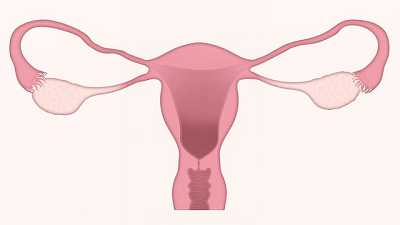What Are the Differences Between the Four Grades of Fallopian Tube Blockage?
When patients undergo fallopian tube examinations, doctors often refer to them in terms of grades one through four. But what exactly do these grades signify? And how do they differ from each other?

In fallopian tube examinations, these four grades primarily indicate the severity of tubal blockage:
Grade One: Open Fallopian Tubes But Not Smoothly Flowing
Grade one blockage represents the mildest form, indicating partial blockage or adhesions within the fallopian tubes without complete occlusion.
Causes may include debris, shed cells or blood clots obstructing the tubes, excessively narrow or tortuous tubes, or adhesions to the pelvic wall or nearby organs causing traction.
This grade presents mild adhesions, where some portions of the tube may impede normal sperm passage while others remain open.
Grade Two: Partial Blockage
Grade two blockage is more severe than grade one, indicating partial obstruction of the tubes, making it harder for sperm and egg to meet. Despite the mild damage, most of the tubes remain intact.
Grade Three: Complete Blockage
Grade three signifies the partial or complete blockage of the fallopian tubes, usually accompanied by severe adhesions or scar tissue.
At this stage, the tubes are significantly damaged, possibly due to prolonged inflammation or factors like tuberculous infection, resulting in scar formation, contraction, or stiffening, rendering the tubes nearly or completely non-functional.
The primary feature of grade three is complete blockage on one or both sides of the tubes, with extensive damage and scarring.
Grade Four: Tubal Blockage with Hydrosalpinx
At the most severe level, grade four indicates not only tubal blockage but also hydrosalpinx, often caused by chronic inflammation.
Bacterial infection leads to infiltration of white blood cells, resulting in mucosal swelling, interstitial edema, and exudation, accumulating fluid within the fallopian tubes.
Hydrosalpinx can cause discomfort or pain in the lower abdomen and may further impair ovarian function.
What Are the Differences Between These Four Grades?
1. Impact on Conception:
As the grade increases, the functionality of the fallopian tubes decreases, significantly lowering the chances of conception.
2. Treatment Methods:
For patients in grades one and two, conventional treatment usually involves Traditional Chinese Medicine, such as the Fuyan Pill. This herbal medicine helps to dissolve adhesions, unblock the fallopian tubes, repair damaged tissue, and improve the chances of conception.
Surgical intervention is typically recommended for patients in grades three and four. Surgery can more thoroughly remove obstructions and repair the structure of the fallopian tubes. Post-surgery, the Fuyan Pill is often prescribed to aid recovery and enhance the success rate of conception.
3. Diagnostic Methods:
Grades one and two blockages can often be evaluated using simpler imaging techniques such as hysterosalpingography (HSG) or ultrasound to assess tubal patency.
Due to the severity of grades three and four blockages, more detailed diagnostic methods may be required. Laparoscopy or magnetic resonance imaging (MRI) may be needed to determine the specific nature and extent of the blockage.
4. Prognosis:
The prognosis for grades one and two is generally favorable with timely treatment. Patients have a good chance of restoring normal fertility.
However, the prognosis is less favorable for grades three and four blockages. These cases require more aggressive treatment and long-term rehabilitation to improve the chances of conception. In some instances, assisted reproductive technologies may be necessary.
The treatment plan and prognosis for each grade are different. Patients should not worry too much in their daily lives and seek medical advice promptly if any abnormal symptoms occur. The specific treatment method needs to be determined based on individual medical examination results and the doctor's evaluation.
You may also be interested in:
Early Symptoms of Fallopian Tube Blockage: 99% of Women Tend to Overlook Them
4 Surprising Reasons Why Fallopian Tube Blockage Might Go Unnoticed
Is Conception Difficult with Fallopian Tube Blockage? How to Make a Self-Rated Check?
Can Hydrosalpinx Lead to Pelvic Adhesions?
previous pageHydrosalpinx Must Be Treated! It Seriously Affects IVF Success Rates
next page- Is Fallopian Tube Blockage Causing Your Lower Abdominal Pain?
- Hydrosalpinx and IVF: What Are the Chances of Successful Embryo Implantation?
- Resistance During Fallopian Tube Examination May Indicate Mild Blockage
- What Should Patients with Fallopian Tube Blockage Pay Attention to in Their Daily Life?
- Mild Fallopian Tube Blockage: Exercise and Heat Therapy as Adjunct Treatments
Testimonials
- Adenomyosis with Ureaplasma Urealyticum Cured by Fuyan Pill
- Tubal blockage with hydrosalpinx can be cured by TCM shortly
- Fuyan Pill Helps A woman with Adenomyosis Get Pregnant
- A Woman with Hydrosalpinx Is Cured with Fuyan pill
- Pelvic Inflammatory Disease Testimonials
- Irregular Vaginal Bleeding and Endometrial Thickening Cured by Fuyan Pill
- Pruritus Vulvae and Frequent Urination: Mycoplasma Infection Cured after 2 Courses



